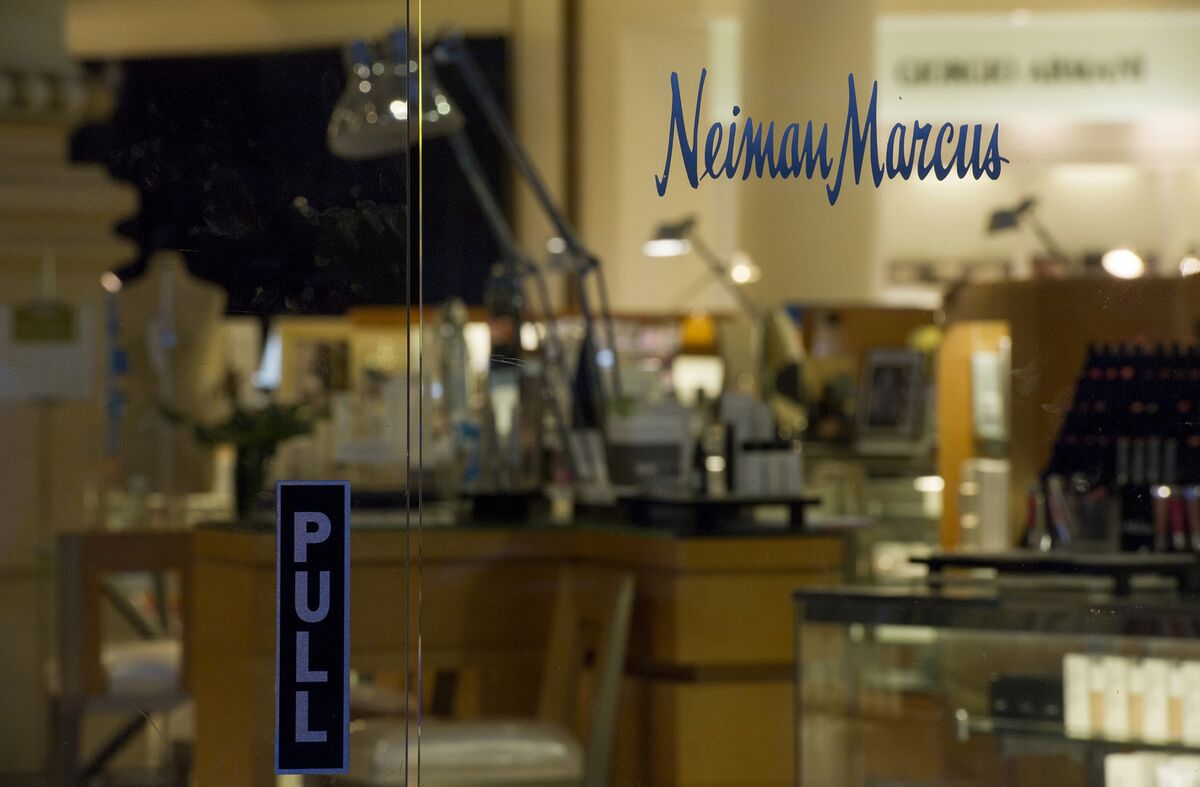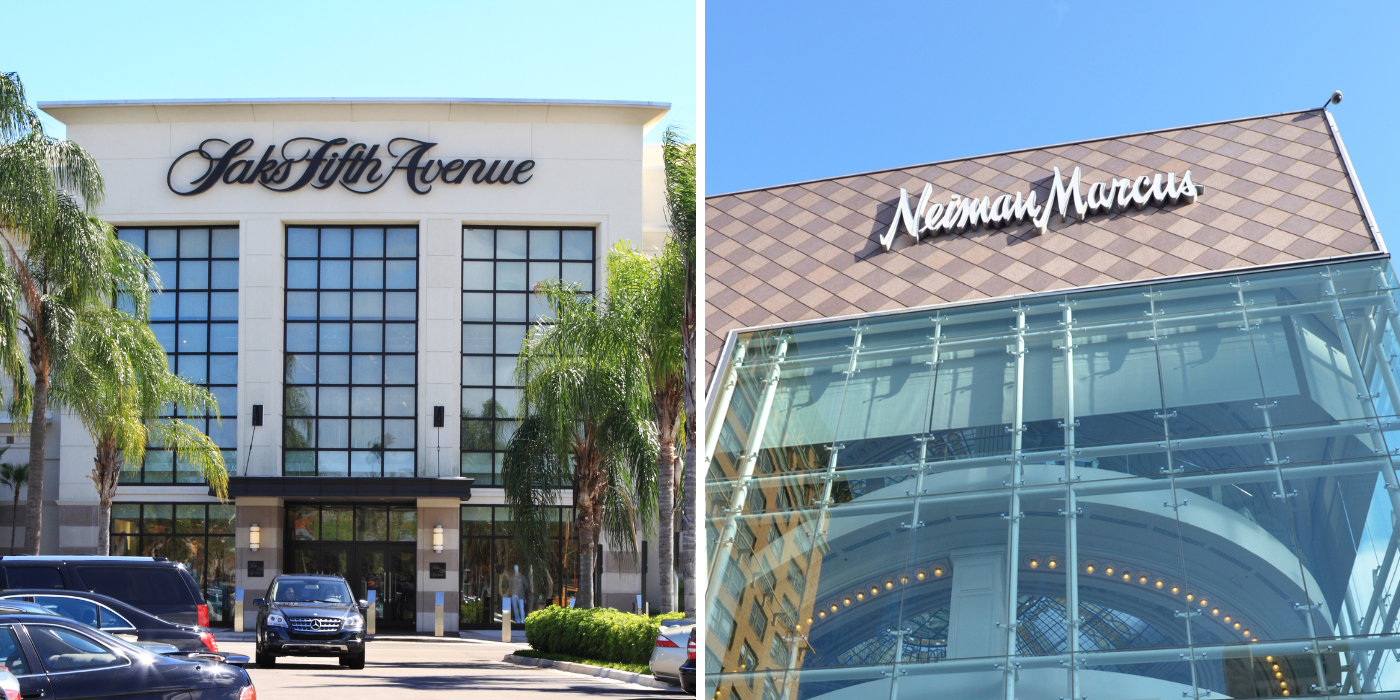Industry Impact and Market Dynamics

Neiman marcus saks merger – The luxury retail industry is characterized by high-end products, exclusive experiences, and a discerning clientele. Prior to the merger, Neiman Marcus and Saks Fifth Avenue were two of the leading players in this market, with distinct market positions and competitive strategies.
Neiman Marcus, founded in 1907, had a reputation for offering a wide selection of luxury goods, including apparel, accessories, beauty products, and home décor. The company operated over 40 stores across the United States, primarily in upscale shopping malls and urban areas.
Saks Fifth Avenue, founded in 1894, was known for its flagship store on Fifth Avenue in New York City, which served as a destination for luxury shoppers worldwide. The company also operated a network of stores in major cities across the United States and Canada.
Competitive Landscape
Prior to the merger, Neiman Marcus and Saks Fifth Avenue faced competition from a range of luxury retailers, including Bergdorf Goodman, Nordstrom, and Bloomingdale’s. The competitive landscape was further intensified by the growing presence of online retailers, such as Net-a-Porter and Farfetch, which offered a wider selection of products and convenience.
Market Share
The merger between Neiman Marcus and Saks Fifth Avenue created a combined entity with a significant share of the luxury retail market. The combined company operated over 100 stores and had a loyal customer base. The merger was expected to strengthen the company’s position in the industry and provide it with greater scale and resources to compete with other luxury retailers.
Consumer Behavior
The merger was also expected to impact consumer behavior in the luxury retail market. The combined company aimed to offer a more seamless and personalized shopping experience across its stores and online platforms. The company also planned to invest in new technologies and services to enhance customer engagement and loyalty.
Financial and Operational Considerations

The Neiman Marcus-Saks merger will have significant financial and operational implications. Both companies bring substantial revenue streams, and the combined entity will have a wider customer base, allowing for cross-selling opportunities and increased market share. However, integrating two large retail organizations poses operational challenges that must be carefully managed to realize the full potential of the merger.
Revenue Synergies
The merger is expected to generate significant revenue synergies through increased scale, cross-selling, and enhanced customer loyalty. The combined company will have a wider product assortment, allowing it to cater to a broader range of customer needs. Additionally, the merger will create opportunities for cross-selling between the two brands, leveraging their complementary product offerings.
Cost Reductions, Neiman marcus saks merger
The merger will also lead to cost reductions in areas such as procurement, distribution, and marketing. The combined company will have greater purchasing power, allowing it to negotiate more favorable terms with suppliers. Additionally, the merger will allow for the optimization of distribution networks and the consolidation of marketing efforts, resulting in further cost savings.
Debt Restructuring
The merger is likely to result in a significant increase in debt for the combined company. Neiman Marcus and Saks Fifth Avenue both have substantial debt obligations, and the merger will require additional financing to cover the costs of integration and potential acquisitions. The combined company will need to carefully manage its debt structure to maintain financial flexibility and avoid excessive interest expenses.
Supply Chain Management
Integrating the supply chains of Neiman Marcus and Saks Fifth Avenue will be a complex undertaking. The two companies have different suppliers, distribution centers, and inventory management systems. The combined company will need to develop a comprehensive plan to streamline its supply chain and ensure efficient product flow.
Store Optimization
The merger will result in a combined store portfolio of over 400 locations. The company will need to carefully evaluate its store network and identify opportunities for optimization. This may involve closing underperforming stores, relocating stores to more favorable locations, or renovating existing stores to enhance the customer experience.
Customer Service Alignment
Aligning the customer service standards of Neiman Marcus and Saks Fifth Avenue will be crucial to ensuring a seamless experience for customers. The combined company will need to develop a consistent approach to customer service across all channels, including in-store, online, and over the phone.
Profitability, Cash Flow, and Financial Performance
The merger is expected to have a positive impact on the combined company’s profitability, cash flow, and overall financial performance. The revenue synergies, cost reductions, and operational efficiencies discussed above should lead to increased earnings and improved cash flow. However, the merger will also require significant upfront investment, and the company will need to carefully manage its expenses to achieve its financial goals.
Customer Experience and Brand Strategy: Neiman Marcus Saks Merger
The merger between Neiman Marcus and Saks Fifth Avenue has significant implications for customer experience and brand strategy. Both companies have loyal customer bases with distinct brand identities and value propositions.
Loyalty Programs
The merger presents an opportunity to align the loyalty programs of both companies, offering customers a wider range of rewards and benefits. However, it also poses challenges in integrating the different program structures and ensuring a seamless customer experience.